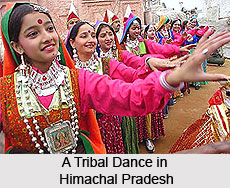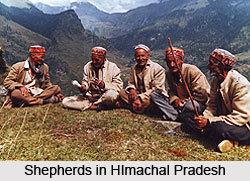 Himachal Pradesh is a multi religional, multicultural as well as multilingual state like other Indian states. There main communities are Brahmins, Rajputs, Kannets, Rathis and Kolis. Rajputs, Brahmins and Mahajans dominate the economic and political life of the state. The low castes form only 24% of the population.
Himachal Pradesh is a multi religional, multicultural as well as multilingual state like other Indian states. There main communities are Brahmins, Rajputs, Kannets, Rathis and Kolis. Rajputs, Brahmins and Mahajans dominate the economic and political life of the state. The low castes form only 24% of the population.
The artisans are generally considered as the low castes. They depend on the high castes for their livelihood. Rajput`s form the majority of the population in Himachal Pradesh. The second largest group for the Brahmins who are the priests of Rajputs. Some of the prominent Brahmin branches are Shrotriyas, the Dixit, the Nagas, the Panch Karmas and the Padhes. The Ghirats are next in number. They are the descendants of Kirats. The Mahajans and Soods, the business communities are sprinkled all over.
Chahang, Saini etc are other castes where people are professional farmers. The Ahirs own windmills and catch fish. The educated people are moving towards other professions and also into farming. Only a few peasant families belong to the backward classes. All these castes are divided into the categories of Kachha, Pakka, Nagar Kotiya and Bhatedu.
 The tribal population of the state comprise of the Gaddis, Kinnars, Gujjars, Pangawals, Lahaulis and Spitians. The Gaddis are the traditional shepherds who migrate from the alpine pastures to the lower regions during the winters. The Kinnars are the inhabitants of the Kinnaur region and have traditionally practiced polyandry and polygamy. The Gujjars are nomads who rear buffalo herds.
The tribal population of the state comprise of the Gaddis, Kinnars, Gujjars, Pangawals, Lahaulis and Spitians. The Gaddis are the traditional shepherds who migrate from the alpine pastures to the lower regions during the winters. The Kinnars are the inhabitants of the Kinnaur region and have traditionally practiced polyandry and polygamy. The Gujjars are nomads who rear buffalo herds.
Himachal also has a sizeable population of Tibetans The people usually wear long gowns and trousers but their gowns do not have mandarin sleeves. They wear boots made of grass or leather. Their caps are indications of the region to which they belong. There are people belonging to different religions as Hindus, Buddhists, and Sikhs. 95% of the total people are Hindus. The languages spoken by the people are Hindi, Punjabi, Mahasui, Kulluyi, Lahauli, Kinnauri, Chambyali, Sirmauri, Bilaspuri, Pahari, Dogri, and Kangri.



















